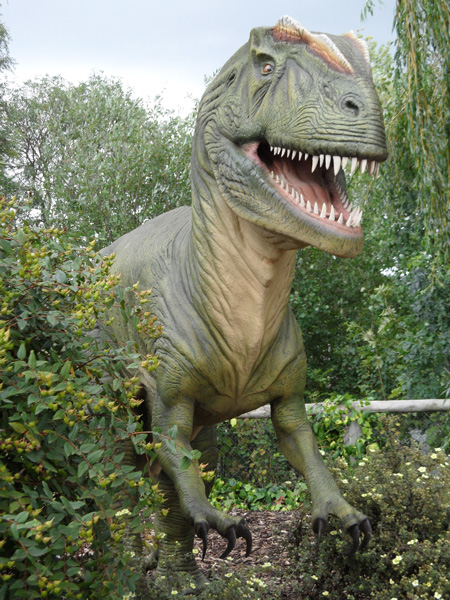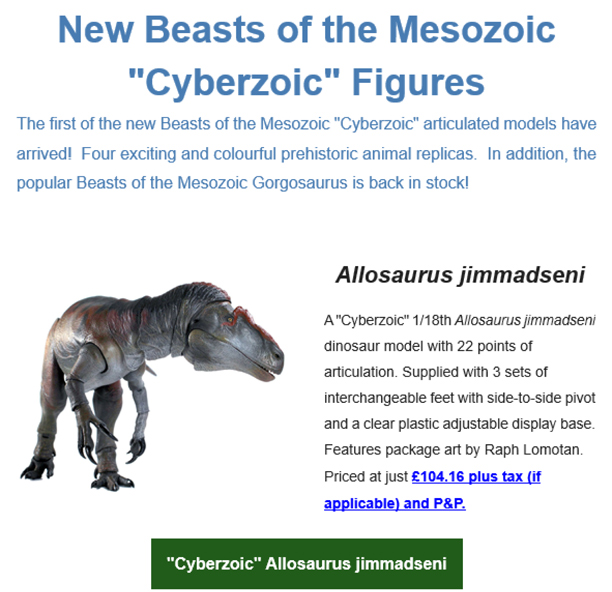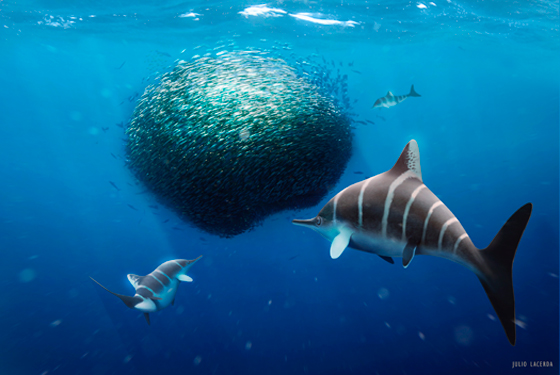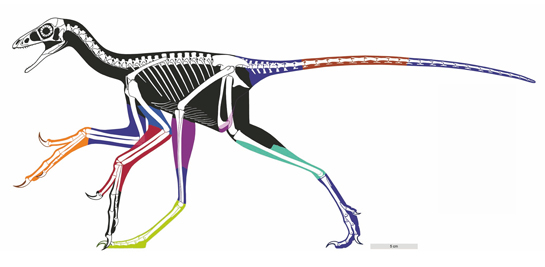Newly published research suggests that Allosaurus europaeus is not a valid taxon. A detailed study of Portuguese fossil material has led to the conclusion that the A. europaeus holotype (ML 415) represents Allosaurus fragilis.
The remains of large theropods ascribed to the Allosaurus genus have been found in Portugal. In 1988, fossils of a meat-eating dinosaur were discovered near the village of Andrés, (Leiria District, Portugal). Additional fossil finds from the coast at Praia de Vale Frades, (Lourinhã, Portugal) and a coal mine in the district of Leiria were assigned to Allosaurus. Subsequently, a European Allosaurus was erected in 2006 (Mateus et al). This dinosaur was named Allosaurus europaeus. However, a detailed analysis of cranial material has led researchers to conclude that fossils attributed to A. europaeus should be bracketed as Allosaurus fragilis.

A life-size replica of an Allosaurus. The genus was first erected in 1877 (Marsh). Several species have been named but the validity of many of these species has been challenged. Picture credit: Everything Dinosaur.
Picture credit: Everything Dinosaur
The Demise of Allosaurus europaeus
Allosaurus fragilis was first described in the Upper Jurassic of Portugal in 1999 based on a set of postcranial remains collected at the Andrés fossil site in Pombal. The description of a second species, Allosaurus europaeus, based on elements from the back of the skull and a sequence of tail bones (ML 415) collected at Praia de Vale Frades in Lourinhã was controversial. The scientists provide a detailed description of a new sample of skull fossil material. These fossils from the village of Andrés are confidentially assigned to the Allosaurus genus.
In addition to the fossil study a comprehensive phylogenetic assessment of the Morrison Formation fossil record of Allosaurus was performed. The phylogenetic analysis indicates that there were only two valid Allosaurus species present in the Late Jurassic ecosystems of North America. These species are Allosaurus fragilis and the recently erected Allosaurus jimmadseni.
To read Everything Dinosaur’s blog post about the establishment of A. jimmadseni as a separate species: A New Species of Allosaurus.
Manufacturers of prehistoric animal models were quick to introduce replicas of this new Allosaurus species. Allosaurus jimmadseni was erected in 2020. The American company Creative Beast Studios introduced an articulated replica of A. jimmadseni.
This figure has proved popular with collectors, especially collectors based in the USA.
To view the range of Beasts of the Mesozoic/Cenozoic figures: Beasts of the Mesozoic Figures.

The new Beasts of the Mesozoic Cyberzoic figure (A. jimmadseni) is one of the highlights of the latest customer newsletter. Shortly, after this new species was erected, new Allosaurus models came onto the market. Picture credit: Everything Dinosaur.
Referring Specimens to Allosaurus fragilis
The authors of the paper postulate that their analysis indicates that only two valid Allosaurus species were present in the Late Jurassic ecosystems of North America. These two species are Allosaurus fragilis and Allosaurus jimmadseni. The researchers provide an updated reference for Allosaurus classification. The Portuguese specimens MNHN/UL.AND.#, ML 415, and MG 27804 are interpreted as belonging to A. fragilis.
This new research helps palaeontologists to better understand the evolution of theropods associated with the Lusitanian Basin. The researchers consider that this study provides evidence of a close biogeographical relationship between North America and Europe during the Late Jurassic.
The scientific paper: “Cranial osteology of a new specimen of Allosaurus Marsh, 1877 (Theropoda: Allosauridae) from the Upper Jurassic of Portugal and a specimen-level phylogenetic analysis of Allosaurus” by Elisabete Malafaia, Pedro Dantas, Fernando Escaso, Pedro Mocho and Francisco Ortega published in the Zoological Journal of the Linnean Society.
The Everything Dinosaur website: Dinosaur Models.




Leave A Comment